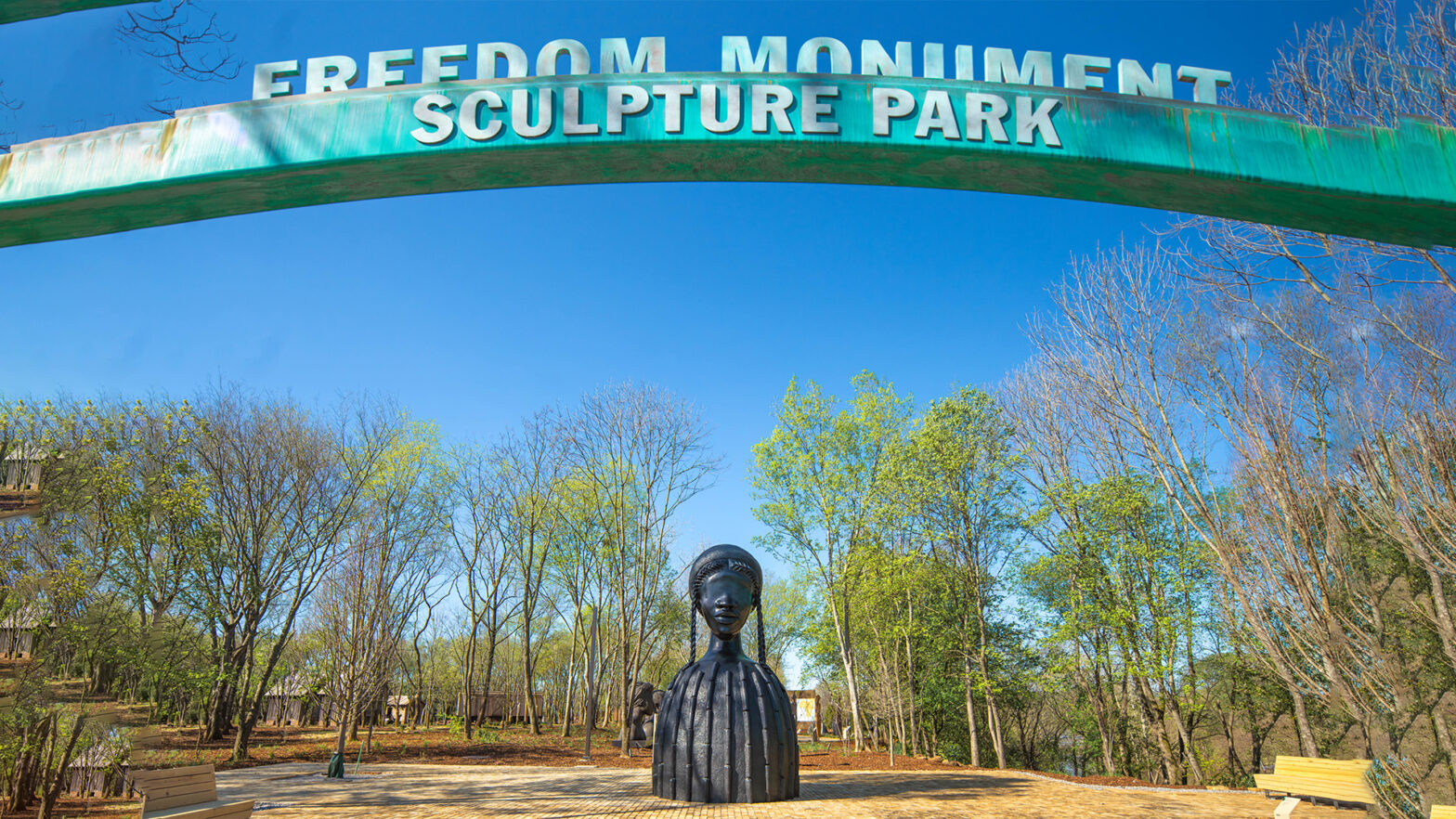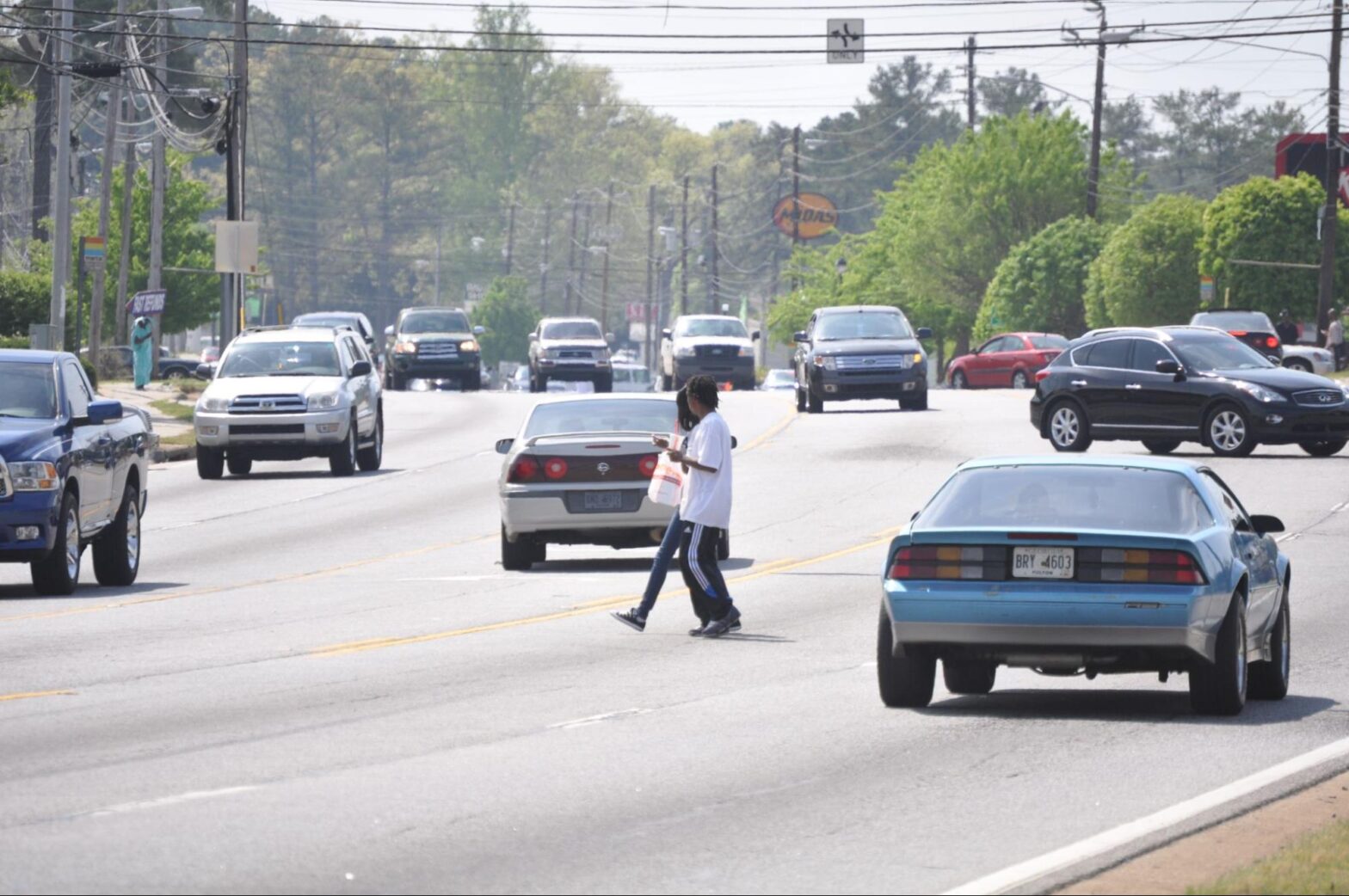
The Sculpture Park explores the legacy of slavery and the lives of enslaved people through contemporary artworks, first-person narratives, and historical artefacts.
New National Monument to Freedom honours the millions of enslaved Black Americans and their descendants
Equal Justice Initiative (EJI) is excited to announce that the Freedom Monument Sculpture Park will open on 27March 2024. The 17-acre site combines historical artefacts, contemporary art, original research, and first-person narratives to provide an authentic and historically significant space that explores the institution of slavery, the lives of enslaved people, and the legacy of slavery in this country. The enslavement of 10 million Black people has shaped the legal, cultural, social, and economic character of the United States in profound ways but the history of enslavement and the lives of enslaved people have often been ignored. The Sculpture Park seeks to address this lack of education and also seeks to honour the millions of people who endured the brutality of slavery and created a more hopeful future for this country. The Freedom Monument Sculpture Park joins EJI’s award-winning Legacy Sites — the expanded Legacy Museum and the National Memorial for Peace and Justice.
“I believe this will become a special place for millions of people who want to reckon with the history of slavery and honour the lives of people who endured tremendous hardship but still found ways to love in the midst of sorrow. Many of us are the heirs to that extraordinary perseverance and hope. There is a lot to learn at this site and we want everyone to experience it,” said Bryan Stevenson, Founder and Executive Director of the Equal Justice Initiative.
The Freedom Monument Sculpture Park presents many historically significant objects, structures, and totems. 170-year-old dwellings from cotton plantations, restraints, and historical objects that represent the violence of slavery, and replicas of critical structures like rail cars and holding pens enable a more detailed understanding of the experience of enslaved people. Bricks made by enslaved people 175 years ago can be seen and touched. The site also presents powerful stories of survival, perseverance, hope, and resistance to the dehumanization that slavery created.
From a short history about Indigenous Peoples to an examination of Africa before and after the arrival of Europeans, the Sculpture Park contextualizes the history of slavery so that a more nuanced and informed understanding of this institution and its legacy is possible. Also explored are the transatlantic trade of African people and the domestic trade of enslaved people in the United States; the laws of slavery in America; the labour of enslaved people; and escape, rebellion, and resistance to slavery. Love, death, family, and faith among enslaved people are acknowledged at different sections of the Park.
The National Monument to Freedom, standing 43 feet tall and 155 feet long, marks the culmination of the journey through the Sculpture Park. Using research from the 1870 Census, which was the first time formerly enslaved Black people were able to formally record a surname, the Monument individually lists over 122,000 surnames that nearly five million Black people adopted at the time and that tens of millions of people now carry across generations. At EJI’s Visitors Centre, guests are able to learn more about the counties and states associated with the names of formerly enslaved people, and visitors can use the kiosks to advance genealogical research or trace family histories.
The art collection at the Sculpture Park is one of the most significant narrative collections in the world, a curated effort featuring newly commissioned works by artists including Charles Gaines, Alison Saar, and Kwame Akoto-Bamfo, alongside major sculptures from Simone Leigh, Wangechi Mutu, Rose B. Simpson, Theaster Gates, Kehinde Wiley, and Hank Willis Thomas. The art works in tandem with historical artefacts to dramatize the brutality of slavery while simultaneously illuminating the strength, dignity, and power of enslaved people and their descendants.
Freedom Monument Sculpture Park is located on the banks of the Alabama River, bordered by rail lines built by enslaved people. The River was also home to Indigenous Peoples who occupied these lands for centuries before the arrival of Europeans in the 16th century, a history which is acknowledged at the Sculpture Park.
The Alabama River flows through the Black Belt of Alabama and was a centre of commerce throughout much of the 19th century. Large plantations were built along the river’s banks where goods and produce could be easily shipped to distant locations. Forming just north of Montgomery, the river flows 318 miles through counties which held some of the largest populations of enslaved people in the country. By the 1850s, rail became the most common mode of moving and selling enslaved people, and hundreds of enslaved Black people arrived in Montgomery each day. By 1860, nearly 400,000 Black people were enslaved on or near the Alabama River.
The Alabama River also has an enduring legacy with regard to Civil Rights and flows under the Edmund Pettus Bridge in Selma, Alabama, which was the site of the most significant efforts for voting rights for African Americans.
Through its significant location, artwork, and historical research and context, the Freedom Monument Sculpture Park presents a significant space for visitors to deepen their understanding of the institution of slavery and its legacy, while honouring the lives of the people who were enslaved.















